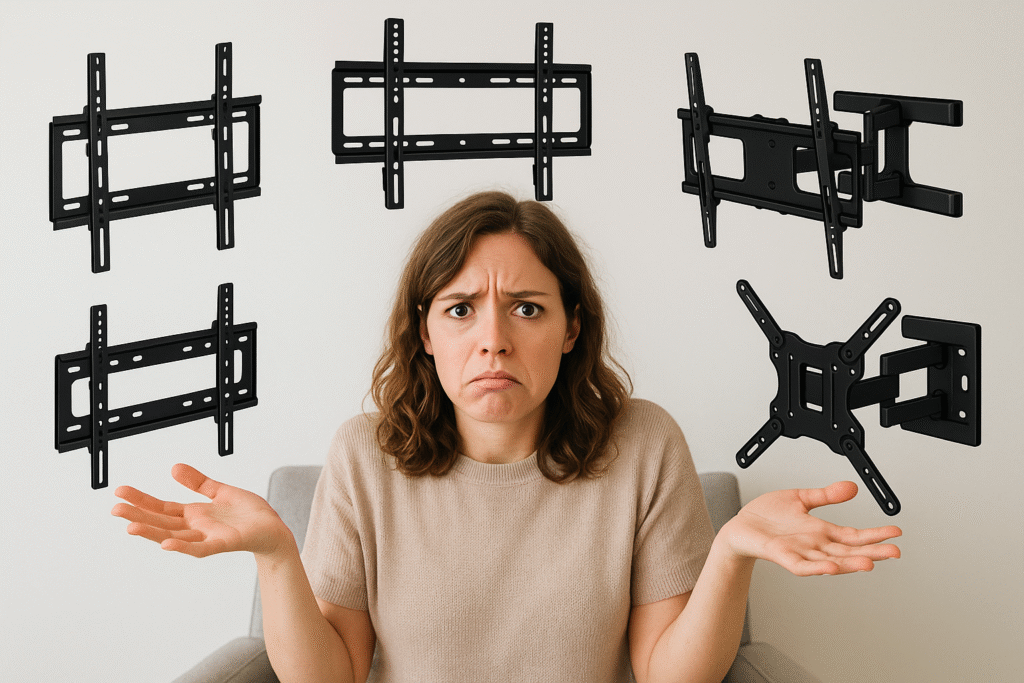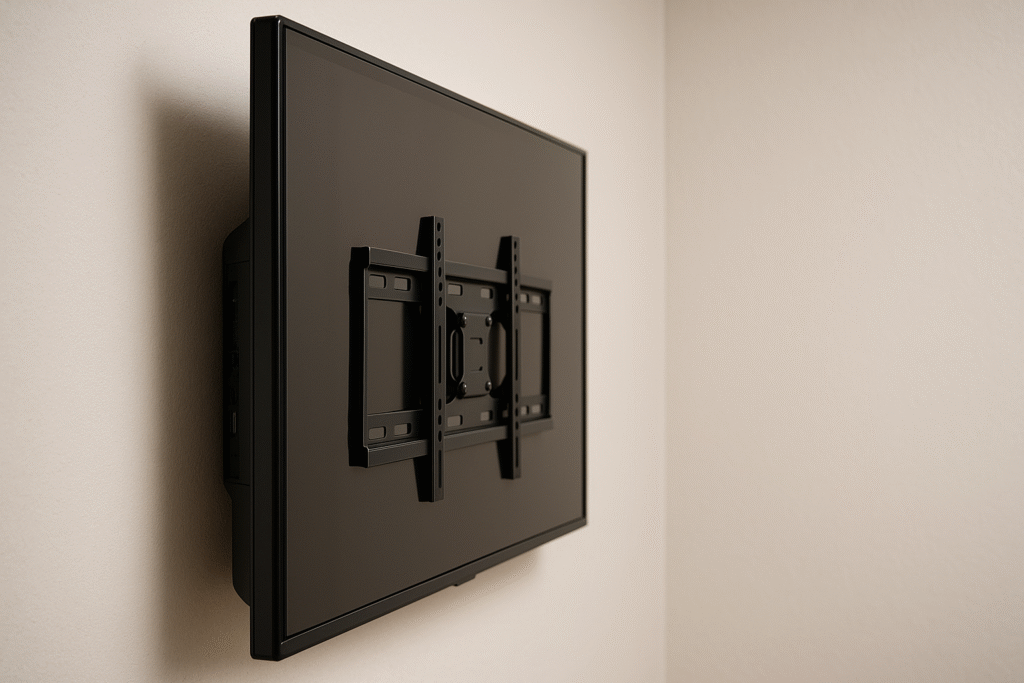
Picking a TV mount today isn’t the headache it used to be. Over the years, mount makers have stepped up their game—more compatibility, better build quality, and smoother installs. You don’t need to be an AV expert to make the right choice. What you do need is a clear understanding of what’s out there and what fits your setup.
Choosing the right TV mount for your TV installation project is one of the more important decisions when it comes to mounting a TV and because more people are choosing to mount their TVs in more locations around the home, the possiblilities for where to mount TVs are ever increasing in addition to the numerous types of TV mount options available.
In this article I’m going to help you decide what you need to consider when choosing a TV mount and how to select the right TV mount for your very own TV mounting project.
Table of Contents
Types of TV Mounts and What They Do
Flat Mount:

A flat mount is one of the simplest mounts you can get for a TV, it is used to mount a TV to a single point on a wall without moving at all throughout the time it’s mounted on that bracket.
It is perfect for spaces like living rooms or bedrooms where you have no need to move the TV to face a different direction when viewing.
Full-Motion Mount: Also called articulating mounts, these let you pull the TV out, swivel it side to side, or tilt it up and down.
They are great for multifucntional rooms that are large and have multiple gathering locations that could cause one to need to move the view of the TV in a different direction.
Ceiling Mount: When you’re short on wall space or working with a unique layout, ceiling mounts let you hang the TV from above. They’re adjustable and often used in commercial or unconventional home setups.
Floor-Standing Mount: No drilling needed. These freestanding units support the TV like a stand but offer some tilt and swivel. Bonus points if they come with shelves for gear—ideal for renters or temporary installs.
Fireplace Dropdown/Mantel Mount: This mount lowers your TV from above the fireplace to a better eye level. It often uses a counterbalance system or gas springs to move smoothly up and down.
Ceiling Dropdown Mount: These are for when you want the TV completely out of sight until showtime. Either motorized or manual, they lower the TV down from a recess in a floor or ceiling when in use, then lift it back up into the recess when not in use.
What to Think About Before You Buy a Mount
1. TV Size Matters: Mounts are rated for specific screen size ranges and weight limits. You don’t want to hang a 75-inch display on hardware meant for a 42-inch model.
Most manufacturers will have a maximum weight and size rating for the TV mount in question to guide the user on whether or not it’s compatible for their TV and specific use.
2. Who’s Installing It: If you’re handy and have a the right tools to mount the TV or assemble the mount, some mounts—like flat or floor-standing ones—are easy to assemble or mount by oneself.
But if you’re dealing with tricky angles, heavy sets, or ceiling installs, consider bringing in a professional TV installation service.
3. Indoor or Outdoor Setup: Outdoor TVs need outdoor-rated mounts. These are made to handle rain, sun, and temperature swings.
When indoor mounts are used outside, I’ve experienced some of them start to rust and the hinges and joints start to crack and pop and it becomes unusable so it’s typically better to purchase an outdoor rated mount to handle the outdoor conditions.
4. Budget Range: Mounts range from cheap and basic to premium and high-tech. Flat mounts usually cost less, while full-motion or motorized dropdowns sit at the higher end.
it is important to determine what you want to use the mount for and then what features matter most and match that to your budget.
5. Mount Location: Where you’re putting the TV changes what mount you need and is probably the most important factor to consider in choosing a mount. Above the fireplace? Go dropdown. In a tight corner? You’ll need something that swivels. Also, keep your wall type (drywall, brick, etc.) in mind.
6. VESA Pattern on the TV: This is the layout of the mounting holes on the back of your TV.
The VESA pattern determines what type of VESA compatible mount you can use for your TV so it is important to get the VESA patter on your TV and use it to choose a compatible mount. TV mounting bracket manufacturers these days design their mounts to fit a range of VESA patterns.
A good rule of thumb to remember is to look at the size the TV is rated for, if the size is correct, chances are high that the VESA pattern will fit.
Final Thoughts
There’s no one-size-fits-all when it comes to mounting your TV. It depends on your space, your gear, and how you like to watch.
Whether you’re into the clean look of a flat mount or the flexibility of a full-motion setup, the right mount makes all the difference. Just match the hardware to your needs, and you’re good to go.
